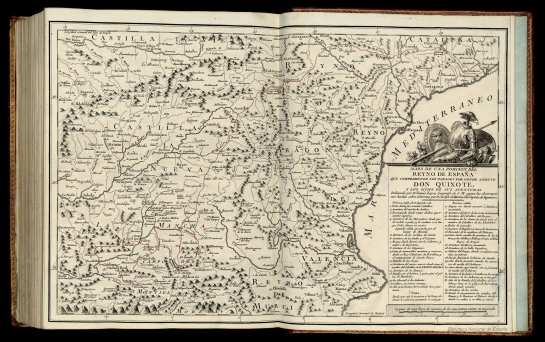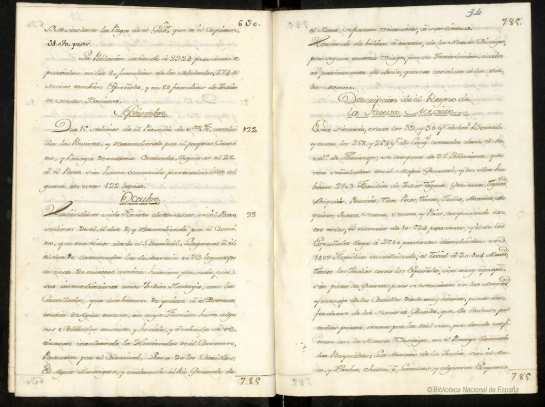In 1795,[1] without leaving the continent of Europe, Juan Lopez of Spain created a map titled Mapa Geográfico del Gobierno de la Nueva Granada ó Nuevo México con las Provincias de Nabajo y Moqui.[2] The title seemed to suggest a sense of adventure, that it was fine to embrace uncertainty and the unknown. (Click images below to enlarge.)

Although his map reflected locations of Spanish influence, Juan Lopez did not exaggerate the influence. His map reflected areas of coexistence, violence and potential violence.
From thousands of miles away, Lopez charted out vast regions controlled by indigenous nations. He imagined the “Apachería,” the “Teguayo,” the “Provincia de Nabajo.” He imagined Spanish missions and settlements within the lands of the Piros and Queres.
To the east, there were vast grasslands where bison grazed; to the west, great rivers that extended so far that they reached, past the margins of the map, to the Gulf of California.
Juan Lopez’s map was authoritative — not because it was a correct geographical representation — but because it was based on many documentary authorities. Lopez claimed to have consulted many sources:

One source was Juan de Torquemada’s Monarquía Indiana (1723), an extensive seven-volume treatise on indigenous Mexican history, culture and traditions, first published in 1615.[3] Volume 2 contained four chapters on New Mexico,[4] which were based in significant part on the letters of fray Francisco de San Miguel and fray Juan de Escalona,[5] who both had spent time in New Mexico and were critical of Juan de Oñate.[6]
The 1723 printing of Monarquía Indiana contained at least one map.

New Mexico was represented as a huge blank space.[7]

Of all the sources he relied upon, Juan Lopez relied most heavily on the work of the French royal cartographer Jean Baptiste Bourguignon D’Anville.[8] This was due to a genealogical connection.

Above, closeup of Jean Baptiste Bourguignon D’Anville’s Amérique Septentrionale (1746) [9]
Years earlier, Juan’s father, Tomas Lopez, had studied cartography under D’Anville and later served as the royal cartographer of Spain. D’Anville and Tomas Lopez practiced “desk cartography,” a method of making maps based on field surveys, formal accounts, and a bit of creative license.[10]

In 1758, while studying in Paris, Tomas Lopez created the Atlas Geographico de la America.[11] He dedicated the atlas to Don Fernando VI, Rey de España y de las Indias [King of Spain and the Indies], whose portrait graced the first page of the book. Chapter 3 featured El Nuevo Mexico, which Tomas described as a fertile land for growing wheat, corn and saffron and where “salvages que llamaban antiguamente Apaches … estan haora mucho mas civilizados” [savages once called Apaches … are now more civilized].

Later in his career, Tomas flourished the corners of his maps of the Americas with dreamy drawings of palm trees, parrots, and alligators.[12] Empire and fantasy overlapped on paper and in life.
In 1780, Tomas created a map of the adventures of Don Quixote,[13] based on the novel by Miguel de Cervantes.[14] Somehow it was fitting that the royal cartographer of Spain would create a map based on fiction critical of the Spanish Empire, written almost two hundred years earlier by a man who suffered through brutal war and captivity and whose petition to live in the Americas was denied.[15]

Cervantes set into motion the creative melding of fact with fiction, laughter with trauma, reality with illusion.[16] This practice flowed into most art forms. [17]
All in all, the tone of Don Quixote and the Spanish maps of the Americas (and New Mexico) was that the world to be desired was an alternative one. The Spanish people wanted something different — and they were going to get it — whether they had to travel thousands of miles by sea, on land, or in their heads.
Sonja Sonnenburg de Chávez
[1] This was the same year that Spain and the United States negotiated the treaty of San Lorenzo, which set the stage for U.S. territorial expansion. U.S. Secretary of State, Office of the Historian, Treaty of San Lorenzo/ Pinckney’s Treaty, at https://history.state.gov/milestones/1784-1800/pickney-treaty
[2] A high-resolution, downloadable digital copy of the map is available at the John Brown Carter Library site at http://jcb.lunaimaging.com/luna/servlet/s/n1j24v
[3] Juan de Torquemada, a Spanish Franciscan priest, learned Nahuatl during his studies in Mexico City and derived much of his knowledge for his treatise from indigenous scholars and teachings. The full title of the treatise was Los veinte y un libros rituales y monarchia indiana. An annotated copy of the 1723 printing of Monarquía Indiana, Indian Monarchy, is available on the Internet, thanks to the Instituto de Investigations Historicas at the Universidad Nacional Autonoma de Mexico. http://www.historicas.unam.mx/publicaciones/publicadigital/monarquia/
[4] Monarquía Indiana, Vol. II, Libro Cuarto, Capítulos XXXVII-XL, pp. 448-461, http://www.historicas.unam.mx/publicaciones/publicadigital/monarquia/volumen/02/mi_vol02.html#Libro04.
[5] For Torquemada’s citations to the letters of San Miguel and Escalona letters, see Monarquía Indiana, Vol. VII, Tablas de Análisis, Libro V, http://www.historicas.unam.mx/publicaciones/publicadigital/monarquia/volumen/07/miv7013.pdf
[6] Cibola Project recently published a transcription and copy of one of Escalona’s letters. See Fray Juan de Escalona, Comissary of the Franciscan Missions of New Mexico, to King Phillip III Concerning Conditions in the New Colony October 15, 1601, at https://escholarship.org/uc/item/8z94h2j8
[7] Descripción de las Indias occidentales, Monarquía Indiana, http://www.historicas.unam.mx/publicaciones/publicadigital/monarquia/volumen/01/01Preliminares/miv1013.pdf
[8] Juan Lopez also noted that he relied on: Pedro Murillo Velarde, Geographica Historia (1752) (discusses New Mexico history at Vol. 9, pp. 169-185, http://bdh.bne.es/bnesearch/detalle/bdh0000000396; Francisco Lopez de Gomara, Historia de la Indias (1552) (Gomara never traveled to the Americas; his book was criticized by Bartolome de las Casas, who disliked its praise of the Hernan Cortes, and banned by the Spanish Crown but later republished several times over the course of three centuries), http://bdh.bne.es/bnesearch/detalle/bdh0000186963, Antonio de Alzate, Nuevo mapa geographico de la America septentrional, perteneciente al virreynato de Mexico dedicado à los sabios miembros de la Academia real de las Ciencias de Paris por su muy rendido servidor, y capellan (1769), http://jcb.lunaimaging.com/luna/servlet/s/7348fm
[9] Jean Baptiste Bourguignon d’Anville, Amérique Septentrionale available at Biblioteca Digital Hispánica, Biblioteca Nacional de España, http://bdh.bne.es/bnesearch/detalle/bdh0000040949
[10] For more on the map-making methods of Thomas Lopez, see C. San-Antonio-Gomez, et al., Tomas Lopez’s Geographical Atlas of Spain in the Peninsular War: A Methodology for Determining Error. http://oa.upm.es/14061/2/INVE_MEM_2011_120868.pdf
[11] Tomas Lopez, Atlas Geographico de la América Septentrional y Meridional : Dedicado A la Catholica Sacra Real Magestad de el Rey Nuestro Señor Don Fernando VI (1758), available at Biblioteca Digital Hispánica, Biblioteca Nacional de España, http://bdh.bne.es/bnesearch/detalle/bdh0000001391. Tomas was also known for his Atlas Geográfico de España, which was published after his death by his sons. http://bdh.bne.es/bnesearch/detalle/bdh0000001859
[12] See e.g., Tomas Lopez, Mapa General de América, ó Hemisferio Occidental que contiene los nuevos descubrimientos y rectificaciones de los anteriores (1772), available at Biblioteca Digital Hispánica, Biblioteca Nacional de España, http://bdh.bne.es/bnesearch/detalle/bdh0000036038
[13] Tomas Lopez, Mapa de una Porcion del Reyno de España que Comprehende los Parages por Donde Anduvo Don Quixote y los Sitios de sus Aventuras (1780), at Biblioteca Digital Hispánica, Biblioteca Nacional de España, http://bdh.bne.es/bnesearch/detalle/bdh0000193109
[14] Miguel de Cervantes Saavedra, El ingenioso don Quixote de la Mancha (1605), available at Biblioteca Digital Hispánica Biblioteca Nacional de España, http://bdh.bne.es/bnesearch/detalle/bdh0000042946
[15] Petition of Miguel de Cervantes (1578), Expediente sobre los méritos y servicios de Miguel de Cervantes Saavedra, Archivo General de Indias, Patronato, 253, R.1. Click HERE.
[16] As Edith Grossman explained, Don Quixote was “the book that crystallized forever the making of literature out of life and literature, that explored in typically ironic fashion, and for the first time, the blurred and shifting frontiers between fact and fiction, imagination and history, perception and physical reality, or that set the stage for all Hispanic studies and all serious discussions of the history and nature of the novel. Edith Grossman, Translator’s Note to the Reader, in Miguel de Cervantes, Don Quixote: A New Translation by Edith Grossman (2003).
[17] For more on Don Quixote as a major cultural phenomenon and its continuing relevance, see Ilan Stavans, Quixote: The Novel and the World (W.W. Norton & Company 2015).


















